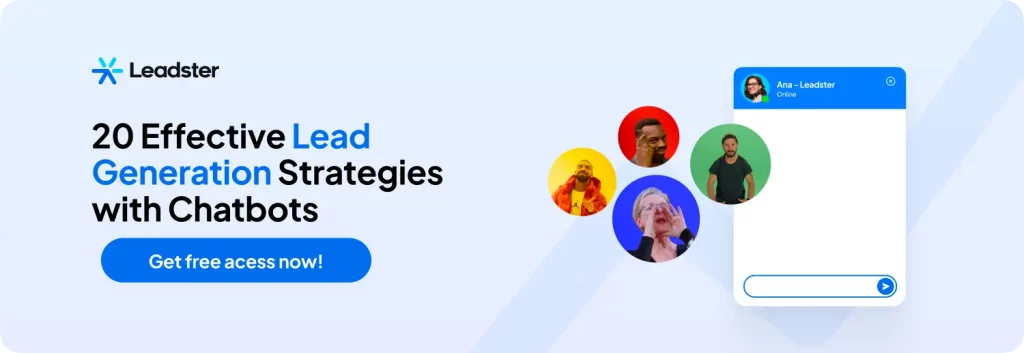Digital Marketing Plan: 6 Steps to Start One Today
How do you do your digital marketing planning?
Do you do it like most companies, leaving it to the marketing team to do everything and then present it?
Or do you do it like successful companies, which integrate departments to deliver a plan that goes far beyond marketing but is a key piece of business objectives?
The vast majority of readers of this article, perhaps even yourself, do it the first way.
“Digital marketing planning is the job of marketing” is the most common phrase we hear when this demand is requested.
But you will see in today’s article that planning and creating a good marketing plan for any occasion are matters for the entire company.
When all areas and different teams work together, the result is always better and more effective. And everyone wins.
Today we’re going to talk about that. Let’s see how to create an integrated marketing plan, with a step-by-step guide on what to do and some important concepts to consider.
Ready? Let’s go then:
What is a digital marketing plan?

First, we need to establish a point: digital marketing planning is different from a marketing plan.
Digital marketing planning is the formalization of all digital marketing actions that the company is planning for the period—typically done annually.
This includes the available budget, conversion goals, the media to be worked on, seasonal campaigns, etc.
In other words, digital marketing planning is the guiding star of all your actions in the period.
Of course, it can change—indeed, it’s quite likely to change here and there throughout the period.
But even these changes are better informed in a good digital marketing plan. You can consult it to understand the purpose of actions and determine how to make these changes along the way without altering too much of what was previously imagined.
In summary, a digital marketing plan allows you to be better prepared to develop individual actions and specific marketing plans without losing sight of the company’s business objectives.
But follow along as we discuss some of the advantages of conducting digital marketing planning at a determined frequency below:
What is the importance of a good digital marketing plan?
Well, as you’ve seen so far, a good digital marketing plan is quite important for organizing your operation.
At the same time, it’s important for us to delve a little deeper into some other points that end up being “hidden” behind this urgent need for planning.
Here are some arguments that will help you even “convince” the management of the great need to put a good integrated digital marketing plan on the radar.
Come with me:
Alignment of expectations
It’s quite common to come across situations throughout the year where stakeholders have X expectations about marketing while what is being delivered is Y, Z, or even @ 😅
And I’m not necessarily talking about delivering results. Sometimes even the production of materials can be confusing when expectations are different.
For example: you start working on organic traffic on your site, and when you present good results to stakeholders and management, the response is negative: “we would like to focus on sales, and no sales were generated.”
Alignment of expectations is important because of this. When everyone knows what marketing is going to do, no one is surprised by the results delivered.
Moreover, the results themselves are also part of this alignment of expectations. If you deliver 100 leads per month but your director expects 500, you end up undermining a great result by not conveying what the initial objectives were.
Task organization for the team
This is one of the most important parts of digital marketing planning, if not the most important.
Especially in seasonal actions, which need to be prepared well in advance. Imagine Black Friday: it starts to be planned well before the launch, in October and in some cases even in September or July.
The team needs to be prepared to handle production in advance, and this is only possible when you already know the path to be followed throughout the year.
Of course, it’s often going to be very difficult to plan everything. But at least a roadmap for the main actions can be prepared!
Setting and monitoring goals
How do you know if your results are good?
Really. Let’s suppose you’re generating 100 leads per month. That’s a good result, but what is your comparison metric? And if your potential at this moment is 200 leads per month?
That’s why a good digital marketing plan will always include goals according to the possibilities of your company and your marketing department.
These goals need to be calculated according to your previous results and including variables such as:
- Team sizing;
- Market outreach;
- Brand recognition;
- Invested budget;
- Difficulty and complexity of actions;
Among other points. With goals calculated this way, you have more realistic and tangible objectives to achieve, avoiding demotivating the team with impossible goals and bringing more prestige to the marketing department.
What should be included in the digital marketing plan?
Well, the argumentative part of the article is over.
It may not seem like it, but in some cases, you may encounter some resistance to creating a good digital marketing plan. Use the arguments above to bring the whole team to your side!
And in many cases as well, everyone may agree on the importance of creating a digital marketing plan, but there may be disagreements about the time this work should take.
Allocate at least 2 months to create the plan. Typically, it is done between November and February, and it has the same term of validity.
But now that’s out of the way, we need to talk about what a marketing plan needs to contain.
Are you ready to start talking about the practical aspect?
Pre-studies of competition
What is the competition doing today? What are the points that you should be doing because the entire market does?
This is the starting point of your marketing plan. And it also helps you have new ideas and learn techniques and strategies that you may not yet know.
To do this work, look for all the competition studies that your company has conducted throughout its operation.
With this, you will have the most important thing: an initial list of your main competitors.
With this list, you start analyzing your competitors’ marketing.
See below a checklist of what you need to analyze, with some resources we have available here on the blog to help you:
- Campaigns they run on Meta Ads;
- Blog analysis to generate leads;
- Analysis of posts on social networks;
- Analysis of visible marketing tools (chatbots, for example);]
- Benchmark of published Landing Pages;
- Analysis of Lead Magnets (e-books, webinars, etc.) available;
- Analysis of email campaigns (convert into leads and see what you receive!).
Among others more specific to your segment and operation.
Delimitation of materials to be produced
With all this ready, you also need to determine which materials you will produce throughout the year.
But hey: for now, we are only talking about the types of material that your team can deliver, not necessarily all the materials you will produce.
First, understand what your team’s specialties are. What can they produce?
For example: in your marketing team, you have designers, videomakers, animators, content writers, copywriters, and social media managers.
So, you can produce videos, live streams, posts, e-books, blog posts, etc.
Without forgetting, of course, the limitations of team sizing. If the designer is also the videomaker, you will need to prioritize one type of material to produce, or produce both with reduced frequency.
With this, so far you already know what your competition can deliver and what you can do yourself. Now it’s time to move on to the next point:
Marketing objectives for the planned period
What do you want to achieve in the period? What are your goals?
This step is fundamental, being one of the most important parts of the finalized marketing planning document.
It is through it that you align expectations with the entire team, management, and stakeholders.
These objectives need to be very data-driven. Analyze your results from the previous year to understand how you can improve them.
And besides analyzing the results, you will also need to analyze what was done. Both actions and campaigns as well as team sizing, tools used, available budget.
This, of course, by making a good comparison. If your structure and budget have improved, you can aim for larger goals.
But if they have reduced in size, you will need to scale your goals accordingly.

Determination of personas, ICP, and target audience
Every strategic digital marketing plan requires well-worked personas according to your target audience and your ICP – Ideal Customer Profile.
So, it is possible and even likely that you will already have all of this defined. But if this is the first time you are creating a strategic marketing plan, you may not have it yet.
And even if you already have it: the marketing plan is the ideal time to review your target audience and confirm if your persona matches your performance.
Remember: the persona is a creative exercise that seeks to illustrate your target audience in a simpler way for the production team.
The target audience itself is created from a lot of market and competition research, seeking to understand to whom your brand and products are intended.
Team Delimitation and Production Schedule
Another point that is interesting to appear in the digital marketing plan is the description of the team and how its production cycle works.
This is not mandatory, and actually, not that common either.
But it’s interesting to show who the people working on the team are, even to formalize that the desired objectives are possible considering the team’s size.
Similarly, it’s also interesting — and much more common — to determine in your plan some information related to your production routine.
How do your sprints work? What is the common deadline for each material? How is the production flow of the materials? Who briefs, who creates the material, who reviews, who approves?
These points are important because the team can change over the planned period, including the management and marketing managers themselves.
Specific Action Plans for Each Area (blog, social media, ads, etc.)
Look: I saved the meat of the stew for last! 😅
Action plans are the formalizations of what you really intend to do in your marketing. It’s the digital marketing strategic planning truly spelled out.
An action plan for social media, for example, will include how many posts per week, indicate the most interesting topics, bring a specific competition study, determine paid media strategies, etc.
At the same time, a blog plan will include keyword research, a more detailed study of editorial fronts, etc.
But I won’t extend too much on this item here, okay? At the end of the article, we’ll have a little more space to talk about this, and I included some examples for the most common areas addressed in this work.
And since we’re talking about action plans:
What is the difference between digital marketing planning and an action plan?
Well, we need to talk a little about these differences since we’re starting to discuss action plans here in the article.
An action plan is quite different from a digital marketing plan, but not that much.
Confusing, right? Not so much: actually, the digital marketing plan consists of several action plans.
The actionable points of the plan — that is, what you’re actually going to do — are the action plans themselves.
For example: you determine a certain quantity of Instagram posts, or the release of Lead Magnets every month with accompanying Landing Page and chatbot, etc.
The digital marketing plan needs these action plans because they are what will drive the marketing forward.
But the action plan needs the digital marketing strategic planning to be created. It’s in the planning where other relevant information resides, such as personas, target audience, budget, etc.
With these differences out of our way, we can continue the article. Now let’s talk about the two main points: first, how to do digital marketing planning. Then, how to create individual action plans.
Come with me:
Simple action plans for elements of marketing planning
Well, now we’ve reached the most fundamental part of digital marketing planning: deciding what you’ll actually do.
This part is so important because through it, you can determine exactly what will be done well in advance.
Or not something as exact: you can create simpler action plans that address issues like budget, frequency, individual goals, etc.
To delve deeper into the subject, I’ve brought here below a slightly better explanation of what goes into each of these action plans.
I also asked our experts in the mentioned areas to bring us some specific recommendations that they themselves discovered by doing the work and putting the hours.
This part of the article is very important! Often, it’s only in practice that we can find some shortcuts and even the best practices when developing the digital marketing plan.
And practice here is abundant. We interviewed Karine Lo Gullo, a paid media specialist; Carolina Fernandes, a content and traffic specialist; and Beatriz Testa, a social media specialist.
Let’s go:
Paid Media Action Plan
Paid media includes Meta Ads, Google Ads, and all other advertising platforms.
The action plan for paid media must necessarily include the available budget and the target audience in the format required by the platform.
These are the two main pieces of information, the most basic ones for you to at least start strategizing your campaigns.
However, you can also go much further, determining ad frequency, types of ads (Google Ads has several, for example, that are quite distinct from each other), A/B testing, campaign themes, and their identity, etc.
It’s also interesting to separate the marketing objectives for each campaign in the action plan. Do you want more followers? Do you want more sales?
It’s important to know each platform deeply to understand what resources are available for each of these objectives.
In action: paid media planning by Karine Lo Gullo, paid media expert @ Leadster
- It’s very important to define your OKRs because they’re how managers will be able to measure the progress of what’s being done. We have a free framework already published!
- It’s very important to do the alignment ritual in the marketing area and between teams, where marketing (the first part of the conveyor) brings the data and discusses the results. Then sales, Customer Success, partnerships, among others, get involved and make decisions, the action plan is drawn up, etc.
- You can research competitors’ ads on company pages on LinkedIn by clicking on posts > ads. You can also use tools like SemRush to research competitors’ Google ads. The same can be done in Facebook’s Ad Library.
- Without structured data, it’s complex to make decisions and measure results. It’s very important that all areas have their dashboards (whether in a spreadsheet, dash tool, etc.) and union of the company’s general data because all will converge to the same goal: the company’s big goal, even if each area has its particular influence on the results.
Organic Traffic Action Plan
If your company works with organic traffic, you’ll also need to create an action plan for this modality.
The work will mainly consist of finding good keywords and creating your editorial calendar according to your conversion goals.
It’s also necessary to determine which stages in the Marketing Funnel your posts will be in, prioritizing conversions according to your business objectives.
“Know that the work of organic traffic growth is a ant work. Until search engines understand the type of content you work with, that your site is a good site, and that your content is good content, it takes time. Therefore, establish realistic goals and deadlines within your organic traffic action plan.” – Carolina Fernandes, Content Analyst @ Leadster
It’s interesting to keep the action plan for organic traffic going beyond the blog. Sketch out rich materials that will complement it, determine budget for on-page SEO, stipulate improvements for the site, etc.
Many people end up relating “organic traffic” directly to “blog”, but it’s not the totality of your strategy.
Social Media Action Plan
A strategic plan for social media should follow some fundamental points to work.
First, you need to set the frequency of postings. Then, the type of posts you’ll usually make, creating major publication fronts.
“Even if the company can’t make several posts per week or if social isn’t its focus, as here at Leadster, it’s essential to be present on social media every week, whether it’s just one post in the feed, story, or even a shared post with a comment, like on LinkedIn. Being present in social media is essential to keep an engaged base.” – Beatriz Testa, Content Analyst.
Don’t try to create editorial calendars right away. They’re interesting and important, but at the same time they’re time-sensitive.
Leave them to be created month by month. This action plan needs to show who the personas are, what their goals are in each post, if paid media will be used, what you’re going to talk about, etc.
This way, when the calendars are created, the action plan for social media helps inform it along with what’s happening in the world and the market at that time.
Influence Marketing Action Plan
Those who work with influencer marketing need to outline a specific action plan for the topic, separate from social media.
This action plan will include:
- Pre-research of influencers for future analysis and contact;
- Benchmarks of brands that do this work;
- Publication fronts;
- The language used;
- The available budget;
- The modality of posts (whether publis or direct contract);
- Among other more specific points.
Among other more specific points. The action plan for influencer marketing should be primarily oriented towards finding good influencers — those that align best with your brand.
So, are you all set to start your digital marketing planning? I hope so!
We can help you with that. Our main product is a chatbot that can generate leads automatically to your website.
It’s very simple to use: all you have to do is set it up with a couple of questions and answers and determine where the chatbot will be shown to your visitors.
You can set it to work on your whole website, or just a couple of very specific pages.
Why don’t you try it now? You can see for yourself how it works and how it can be implemented in your marketing plans.
All you have to do is click on this link and start your free trial today, no credit card required.
Thank you for your time. We’ll talk soon, I hope. Until the next one!








